Sunday, 14th of September, Jinja in Uganda to Eldoret in Kenya
Even after having reconfigured the batteries, Anse’s starting problem still seems to persist but I leave it for now since up to now, if with difficulty, she always starts somehow. In a sms conversation with the American guy Eric, it turns out that he planned to climb Mt Kenya but was turned away since one is not allowed to climb it solo. So after giving it some thought, I decide to join him to attempt the hike together!
I give Tune a lift to NRE, have a quick look at the very commercially run source of Nile (I wouldn’t bother going there again!) and buy my stash of Nutella before proceeding to the Uganda/Kenya border crossing in Malaba. It turns out to be a bit of a lengthy process since I have to convince the customs officers to stamp my carnet in and out at the same time since there isn’t any customs at the border crossing in Ileret on Lake Turkana. It’s a long drive to the Neiberi Campsite in Eldoret where I meet Sascha and his girlfriend Daniela from Germany who are overlanding in a Defender. The Indian campsite owner Raj Shah is the proprietary of the big cotton and knitting mill Rupa in Eldoret and runs the campsite by the side for the fun of it and to meet interesting people! He even offers me to make free use of his auto mechanic ‘Mebs’ who works on the company cars and trucks.
Monday, 15th of September, Eldoret to Naro Moru
I drive to the Rupa Cotton Mill, to get a second opinion from Mebs about a chafing noise on the front left that Anse makes when leaning over a lot, and he tightens all the bolts on the springs and shocks. At Chloride Exide I manage to have both my batteries replaced since I think Anse’s starting problem might be caused by my newer battery discharging into the older one. It’s a long slog to Naro Moru because of the bad road conditions and I only manage to leave Eldoret at 2.30 pm. But good thing I got a route description from Raj which helps bypassing the really bad patch of road west of Nakuru by driving via Eldana Ravine and Kampi ya Moto which makes it more bearable and after a 6 hour drive I manage to get to the Mt Kenya Youth Hostel in Naro Moru at around 8:30 pm where I meet Eric and the hostel owner Joseph. A quick pasta and Eric’s favorite mini chicken dogs in a can (Nakumatt makes it possible!) satisfy our rumbling stomachs.
Tuesday, 16th of September, Naro Moru to Mt. Kenya, hike to Met Station
Eric and I pack our backpacks for the hike, I park Anse next to the youth hostel with power connected to my fully stacked fridge and we leave around 10 o’clock in Eric’s car to Mt Kenya NP gate. The first part of the hike to the Met Station at 3100 m takes us 3 hours (2 of them rainy) along a jeep track through indigenous bamboo and rainforest. The hike gives us a chance to get to know each other a bit and it turns out that Eric is the guy that I already heard so much about from other overlanders. He’s been traveling already for 2 ½ years from the UK down the west coast of Africa down to Cape Town and he is now on his way up on the east coast (www.border-crossings.com)
We leave our backpacks at the Met Station and walk uphill another half hour which supposed to give the body a better chance to acclimatize. Back at the Met Station hut we meet a friendly German couple Gaby and Werner (Martin in Africa since nobody seems to be able to pronounce his first name properly) from Bamberg who are on their descent with their guide ‘little Joseph’. We have a few good laughs with them, enjoying their south German accent (Eric also talks German fluently since his father is from Bavaria and his mother from Switzerland). Already this altitude keeps me awake at night.
Wednesday, 17th of September, Mt. Kenya hike from Met Station to Mackinder Hut
We hike 6 hours from Met Station to Mackinder Hut via the ’Vertical bog’ which is a real marshy area with the odd red and white wooden marker showing us the way. The vegetation changes from forest to bamboo to lobelias. Again the rain sets in within one hour of walking… time for what Eric calls my ‘smurf outfit’ (referring to the UK comedy Little Britain), my clashy array of violet rain pants with my turquoise/black rain jacket. As the Met Station Hut, Mackinder Hut is pretty nice with stunning views of some of the snowcapped Mt Kenya peaks. At 4300 m I can feel the altitude sickness symptoms creeping in with a headache and nausea and stay in the hut eating some hot soup while Eric walks a bit further to find a nicer (and rubbish free) spot to pitch his tent. There is a big group of hikers spending their rest day at the hut to leave for the ascend tomorrow morning at 3 am, so I am glad to get a bed in a separate dorm. Apart from my headache and nausea I also have a runny stomach and don’t sleep a blink that freezing night.
Thursday, 18th of September, Mt. Kenya, Mackinder Hut
We spend an acclimatization day at Mackinder Hut but still walk up a scree field just with the essentials in our backpacks, leaving the heavy stuff at the hut. The formidable views at the glacier, the icy blue tarns and the higher snowcapped Mt Kenya peaks glistening in the sun are (literally) breathtaking. At about 4500 meters, three quarters through the scree field, I stop pretty exhausted with a pounding headache and wait for Eric who manages to walk all the way to the Top and Austria Huts (which at about 4600 m are used as a base for climbers going up the technical routes) and scouts out the area for the right path. It’s really freezing up there and I am glad to get back to the Mackinder Hut to boil us some hot soup on my little benzene cooker. Even though I eat well and keep fairly warm that night with a hot water bottle in my sleeping bag, my runny stomach still troubles me and again I don’t get any sleep that night.
Friday, 19th of September, Mt. Kenya, walk from Mackinder Hut back to NP Gate, drive to Naro Moru
We attempt to go up to summit and leave at 3:30 am(!). It’s an at the same time magnificent and eerie atmosphere, walking into the freezing darkness in the beams of our headlamps, the glacier and snow fields reflecting the moonlight and turning the rock faces into a shimmering bluish grey. After my third sleepless night, runny stomach and headache I feel too weak though to head up all the way to the summit and when we reach the scree again, I decide it would be more sensible to descend - it’s a bit disappointing but we also had an awesome experience without summiting. Reaching Mackinder Hut again I sleep a bit and around 10:15 am we walk back to Met Station where we catch a ride to the main gate with the porters (who have been logging radio equipment, solar panels and heavy batteries all the way up to the Austria Hut!). We find Eric’s car safe at the parking lot even though there is an inner tube missing out of his box on the roof! Back at (big) Joseph’s hostel we enjoy a hot shower and a well deserved meal.
Saturday, 20th of September, Naro Moru to Maralal
Our aim is to hook up with the Swiss couple Andi and Coni who are waiting for us at Loyangalani on the east shore of Lake Turkana to head up north together, so we drive to Nanyuki, where I have CMC Land Rover look into Anse’s starting problem again – to no avail. After shopping for some veggies and fruit at the local market, I leave around 12:30 on the long corrugated road via Isiolo (saw first camels grazing next to road) to the Yare Camel Club Campsite in Maralal, where I meet Eric again (who had left some time before me) some 6 ½ hours later. We enjoy a hearty chicken curry with chapattis, wash it down with a few beers and enjoy the nice vibe at the bar.
Sunday, 21st of September, Maralal to Loyangalani on Lake Turkana
Eric and I leave around 8:30 for another long almost 9 hour drive to Loyangalani on Lake Turkana. The road is rocky and slow going in places but otherwise fine and the surroundings are initially a lot greener than I imagined. That changes though further north and when Lake Turkana comes into sight it seems totally surreal in that arid landscape – an awesome view that shimmering bluish water against the rust brown volcanic gravel with the odd solitary white barked contorted tree strewn in it!
Loyangalani is quite a bizarre place, an oasis-like community of igloo-shaped huts made of palm leaves and corrugated iron in the midst of this deserted landscape! After all the sms conversations between us, we finally meet Coni and Andi (and their red Nissan Patrol) in person. They have settled at the Palm Shade Camp, but Eric and I are not happy with the price (KSh 450!) and find a cheaper option not far away, the Rhino Women’s Group Campsite for KSh 250 where we position our cars amongst a bunch of palm trees in such a way that the rooftop tents are somewhat sheltered from the strong thermal winds that come up every night from about 11 pm. Eric’s screw drivers (vodka orange) compensates for the rather meager dinner that night.
Monday, 22nd of September, Loyangalani, Lake Turkana
We put in a rest day and have our laundry done by the women who run the campsite. For lunch the four of us have a tasty (but rather tough) chicken with rice and discuss the upcoming route. Eric and I visit the Masai fishing village El Molo on the shore of Lake Turkana where in this unbearable heat I can’t help myself but jumping into the Lake with all my clothes on (to the amusement of Eric and our guide). After buying some local souvenirs (I get one of the wooden headrests) we drive back to Loyangalani and civilize ourselves as we are invited to a goat braai by four Czech researchers who examine Lake Turkana’s fish for parasites and were given a lift the previous day by Coni and Andi when they were stranded in their broken down car 20km outside Loyangalani. It turns out to be a joyful evening with delicious food being prepared for us, the local beers and imported Czech spirits flowing and the lightly clad Czech blonde researcher twisting our heads in her ‘Jane’ outfit.
Tuesday, 23rd of September, Loyangalani to bushcamp south of Sibiloi NP
The four of us leave around 8 am, (slightly troubled by hang over symptoms), visit the nearby rock engravings and drive north past the small Gajos Oasis where a row of maybe 15 local herdsmen scoop water out of a deep well by handing buckets from one to another and emptying them into long troughs where hundreds of grunting camels gather to quench their thirst. Just south of Sibiloi NP we cross an area with several sandy dry river beds lined with scattered bushes and big acacia trees – bushcamping heaven! We find a nice spot in the shade of a big tree right next to the river bed and enjoy the evening next to a roaring campfire.
Wednesday, 24th of September, bushcamp south of Sibiloi NP to bushcamp on northern Lake Turkana
We reach Sibiloi NP where we make a point in informing the deputy park warden about the wrong pricing for the public campsites (they charge the special campsite fee ($15) for the public ones which should be $5). The impressive sites of a petrified forest, a huge, well preserved turtle and a crocodile fossils make up for the scarce wildlife. Even though we make an effort to look for it, we don’t manage to find the poorly signposted elephant fossil and carry on driving on a sandy track to the rather strange Koobi Fora ranger’s post. Since we didn’t see the turn off an and it’s anyway not included in the park fee, we give the Koobi Fora Museum a miss and find a (in places faint) track going straight north from there through the former now dried out lake shore where we see, even though still within the park boundaries, numerous cattle herds grazing in the distance. After taking a rocky track that we think links to the main road, we end up in a cul-de sac of a deserted village with dilapidated houses where Coni and Andi prove that Swiss precision and team work doesn’t always have to take ‘Bern Time’ when they change their punctured tire in remarkable 12 minutes! On our way down the escarpment Eric also gets a puncture – the 29th on his trip! From Karl and Karen who Kirsty and I met in Queen Elizabeth NP I received a waypoint for a bushcamp on Lake Turkana and we follow a faint track right to the beach where we pitch our rooftop tents just before darkness sets in.
Subscribe to:
Post Comments (Atom)



















































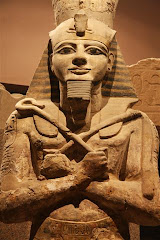

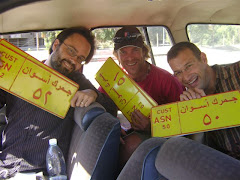










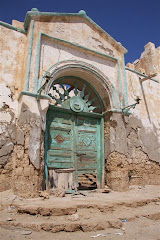

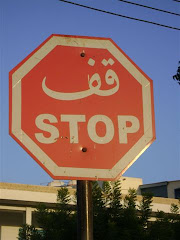










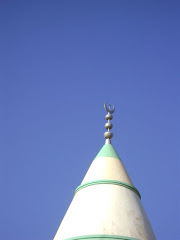












































































No comments:
Post a Comment